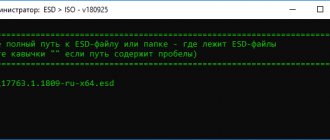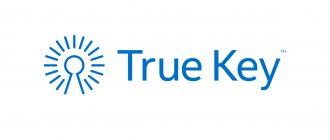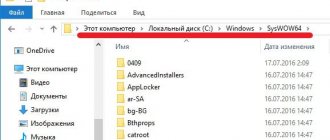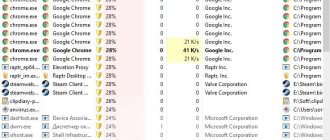Before you figure out how to use Steam, it’s worth explaining what the program is and why it is needed. Steam is a well-known and largest digital store for games and updates for them on the Internet. The name translated into Russian sounds like “valve”. Users simply call it “Steam” among themselves. Using Steam, you can purchase more than three thousand products on this topic and more. At the moment, Steam has more than 63 million users, which is an undoubted record for such a resource. The owner and creator of the store is the famous company Valve Software.
Steam Features
- free use of already purchased and activated games,
- automatic free game updates. Updates are installed automatically upon release,
- gaming world news,
- information about new products,
- search for games and servers for them using various criteria and filters,
- purchasing a game for another person as a gift at your own expense,
- various communities of interests,
- chat between users.
How to install the program and how to use it to activate games and use the full variety of resource capabilities? Let's look at the step-by-step instructions.
Developers want Valve to tighten control
While it's logical to expect the opposite, I found that Valve's new no-control approach was not supported by the developer community.
Steam users have already complained about dozens of copycat games with replaced resources, trojans and cryptocurrency mining scams, but even developers who have the ability to release anything at any time believe that stricter controls are needed. “There are people making quality games and getting the same level of support as trolling games made in a couple of days,” says the developer of Pillar, Path of Motus and other indie games. “On top of that, Valve takes a 30 percent share without doing much of anything. This is precisely the main problem of the system.”
Other developers are concerned about the level of order on the platform.
“This is dangerous,” another developer told me. “There needs to be some level of control to keep trash (and I mean real trash that doesn't even work) from entering the store. Walmart doesn't allow just anyone to stock their shelves, so why should Valve?"
Valve defends its decision to move to Steam Direct, saying that "the games we allow into the store will not reflect Valve's values." But at one time this point of view was criticized as tantamount to refusal and evasion of help. The developers are happy to share their thoughts on this matter.
“I'm a passionate supporter of free speech,” says one developer. “Commercial products, in my opinion, are also a form of self-expression, but they are still different from it. “Just because we sell a game doesn't mean we encourage it” is a lame line of defense! You have to recognize that you are indirectly rewarding everything you sell because you have a cut of it.”
Installing "Steam" and creating an account
- To install Steam, you need an Internet connection. It is best to download the program from the official website.
- During installation, the program will ask for a login and password. If this is your first time installing Steam, you will need to go through a formal registration process. To do this, you need to fill in the following fields: “Account name” - your unique name (login) in the Steam system, “Password” - your password, respectively. In the next field, you will need to re-enter the specified password. Next, press the “Next” key
- If the login you created already exists in the system, you will be given the opportunity to change it to a new one.
- Next, enter your active email address in both fields and select a security question that you may need to recover your password in the future. Answer the question and press the “Next” button.
- The system will display a message on the screen indicating that registration is complete. Click “Finish”
Is Steam's 30% share worth it?
Almost all the developers interviewed for this article answered the question about the justification of Steam's 30 percent share in a strictly negative way.
Many fondly remembered the good old days when Valve "actually did something" to earn their money's worth. Today, most developers suspect those days are gone. “There were other companies doing the same thing as Steam, managing updates and transactions, like BMT Micro,” said another developer. “Most of these companies took 4-5 percent of each sale. For its extra 25 percent, Steam should provide access to “all these customers,” but it doesn’t, and in fact sends toxic customers to you, leaving negative reviews and making your situation worse.”
Hicks said that in his opinion, the difference between Valve's 30 percent and Microsoft or Sony's 30 percent is the level of personal support and care provided, Hicks explains. “They also do their best to give each game its fair share of attention in the store at launch.”
Steam does not provide the same level of support.
“Valve doesn’t have any of this,” Hicks continues. “The company has stopped providing personal assistants to developers; the amount of banner support they receive depends on the popularity of the game, so there are no guarantees. Besides, there is no one to discuss marketing with. If they're going to completely relinquish control and redirect smaller developers to the forum if they have support issues...then no, it's not worth 30 percent to me. Frankly, they do the same thing as itch.io, and itch only takes 10 percent by default!”
In addition, many developers spoke negatively about what they perceived as the existing and essentially unbreakable monopoly that Steam maintains in the PC gaming market.
"I don't think any digital store that takes 30 percent just for storing downloads justifies that cut, but the problem is broader than just Valve/Steam," said Paul Turbett. “Unfortunately, this has become the industry standard today, and change is unlikely—especially since most platforms have a single dominant store or monopoly, and therefore have no incentive to offer developers more.”
Jeffitt has the opposite opinion, saying 30 percent is a good deal, especially compared to the alternatives.
“Some games get a huge amount of free marketing from Steam (and others don't). Currently, the games to be featured on the home page are selected algorithmically, meaning the site tries to show users the games they will buy. If you are on this list, then Valve is giving you a truly enormous amount of free marketing for their 30 percent.”
Regardless of our wishes, a share of 30 percent is the standard today, and the situation will be difficult to change.
“Given how much web marketing relies on metrics, it's easy to price, and in general the price will be roughly equivalent to the 30 percent Steam gets,” continues Jaffitt. “In other words, if you have to buy marketing from Facebook and Google, you'll end up paying more (and probably selling less, because people tend to trust a link to your site less than a link to Steam).”
Game activation
Registered, logged in, looked around and now the key question is how to activate the games? How to use Steam? To activate the game, you must complete the following steps:
- Open the program menu item called “Play Games”
- In this window, click on the name of the game
- If your copy of the game has not yet been activated, Steam will automatically offer you to buy it.
- Click on “Register a product I already own”
- Next, you need to enter the individual registration number of the copy of the purchased game and press the “Next” button.
- After checking the number and downloading updates, the program will complete activation
Steam is...
You probably already guessed what Steam is. This is a gaming platform, a service designed for purchasing and launching computer games, communication between players, creating gaming communities and much more related to gaming topics.
Being the brainchild of Valve, in the early 2000s Steam was used only to distribute and activate the developer's products. Today it is a full-fledged social network with many functions, like Facebook or VK, which supports more than 10,000 games and applications from different manufacturers: Sega, Epik Games, Ubisoft, Rockstar Games, etc., including many free ones.
The Steam platform exists in a web version, accessible through a browser, and as an application for all major desktop and mobile operating systems - Windows, OS X, Linux, PlayStation 3, Android, iOS, as well as Samsung Smatr TV Tizen OS (with restrictions) . Installation and use of the service is completely free, payment is charged only for content.
Finally, useful tips
- An important point to remember in the context of how to use Steam is that it is not possible for two users to play from the same account.
- If, when loading an activated game, the speed is lower than what your connection can provide, you need to go to “Settings” - “Download” and change the download server in the context menu.
- look for game secrets in various thematic communities.
- Be sure to wait for the games to load 100% and do not allow the Internet connection to be interrupted, otherwise the entire activation procedure will need to be started again.
Steam disagrees
While a developer can try to remove a negative review, the process is often arcane, with no clear instructions from developers and publishers.
“Valve doesn’t do anything about negative reviews, which are obviously support issues,” one developer told me on Discord. “Valve doesn't even give users any tools! And users know that a negative review will receive attention, they understand that the developers do not want negative reviews. In addition, Valve does not react in any way to trolling, even if it is obvious. I've reported negative reviews where someone said they wouldn't recommend the game because our online service had its own EULA."
This is a major point of contention for some developers.
“I reported this. My ticket was rejected,” he continued. “Then I emailed my Steam contact the list. He replied, “Your job is to keep communication open and set expectations correctly so that negative feedback won’t be a problem.” Seriously? And this is the answer? This user gave a negative review because I didn't allow him to use the word FUCK in his name. Is it a problem of managing expectations?”
Steam reps seem to often reassure frustrated developers by telling them that "many of the top 10 games on Steam have negative reviews." My interlocutors consider this point of view ridiculous.
“These are games with a budget that allows you to buy advertising on television,” one of the developers said in response to my question. “They attract users through sources that have nothing to do with Steam, it’s like they’re in a completely different universe.”
How to download games
The selection, purchase and installation of games are made through the “Store” section of the main menu. The distribution of content by genre and other categories (new releases, top sellers, etc.) is in the column on the left.
Clicking on the game banner will take you to its purchase page. Here you can find more detailed information about the offer: trailers, gameplay screenshots, description, system requirements, as well as the game distributions themselves and additional paid content. The same page contains information about discounts and promotions.
To buy something from what is offered, click the “Add to cart” button next to the product and follow the instructions to make a payment. The purchased game and additional content will be downloaded to your Library.
Why do you need Steam?
First of all, you will need Steam to purchase and run the vast majority of computer games. Without this service, you will not be able to officially play a number of games, because they are distributed exclusively through store .
The application also gives access to multiplayer features such as multiplayer, various user communities, reviews for various applications and much more.
It’s hard to imagine the modern game industry without Steam, because the service has completely occupied its niche among players, surpassing in popularity services such as Origin, Battle.Net, GOG.COM, Windows Store and other digital goods stores.
How to register on Steam
To register for the Steam service, launch a pre-installed application or open the website store.steampowered.com, go to the “Login” section and click the “Create account” button.
Enter your email address, confirmation and verification code. Accept the user agreement and confirm registration by clicking on the link that will come in the email.
After confirmation, return to the registration section, create a unique name that will be displayed to other users, and a password. Click "Complete Registration".
Where can I get it from?
So we found out what Steam is. It's time to turn to its direct use. There are two installation methods: if you purchased a game (on physical media) that can be linked to your Steam account, the operation will be performed automatically.
If you plan to purchase programs from the Valve brand store, then visit their official website and download the client installation package. The program “weighs” several tens of megabytes, which is simply ridiculous in today’s times.
Note! We have already talked about the large size of patches and updates that will be downloaded after installation. If you don’t have a more or less sane Internet (minimum 1 Mb/sec), then you shouldn’t contact Steam at all. You will waste a lot of time and nerves.
By the way, what is a Steam key? This is a game permit that supports activation and assistance through this service. This possibility will be indicated on the disc packaging or on the manufacturer’s website.











